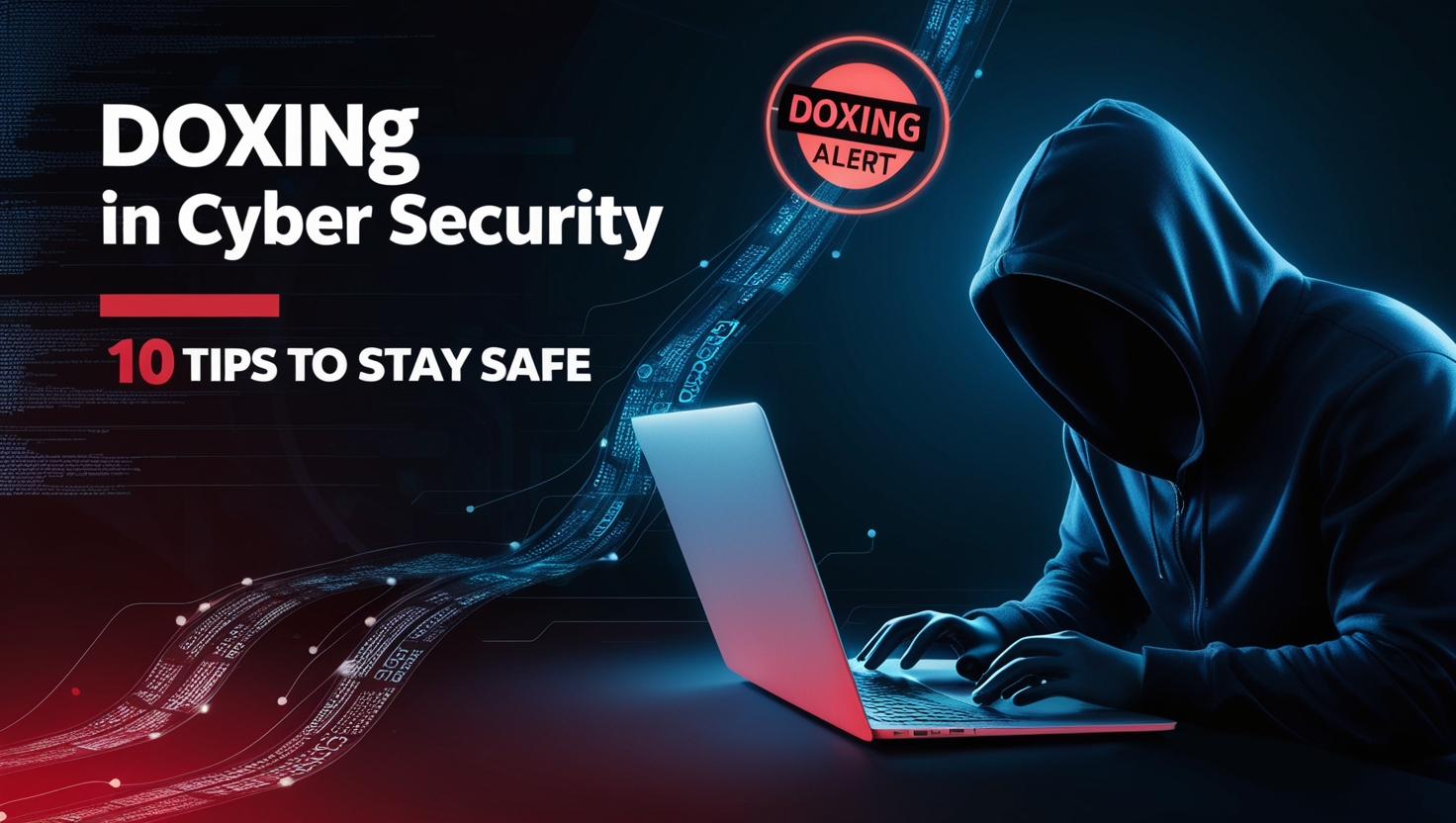1️⃣ 🤔 What is Doxing?
Doxing in cyber security refers to the act of gathering and publishing private or personally identifiable information (PII) about an individual without their consent. This malicious act is typically performed with the intention of harassing, intimidating, or harming the target.
The term “doxing” comes from “dropping documents” or “docs.” It started in the hacker culture where rival hackers would release sensitive information of each other to the public. Today, it’s not just a cybercriminal act — anyone with internet access and malicious intent can attempt doxing.
2️⃣ 🕰️ The History and Evolution of Doxing
Doxing has evolved significantly since its early days on bulletin board systems (BBS) in the 1990s. Initially, it was used in hacker communities to expose real identities. Over time, it became a tool of online vigilantism, cyberbullying, and revenge.
As social media platforms grew, so did the ease of gathering public data. Now, doxing in cyber security is a tactic used not just by individuals but by activist groups, stalkers, and even state-sponsored entities. It has moved from being a fringe cyber-prank to a serious threat affecting people globally.
3️⃣ 🛠️ How Doxing Works: Techniques and Methods
To understand doxing in cyber security, it’s important to look at how attackers gather information. Common methods include:
- Open Source Intelligence (OSINT): Collecting publicly available data from social media, forums, job listings, etc.
- Social Engineering: Tricking people or organizations into revealing information.
- WHOIS Lookup: Accessing domain registration info tied to personal details.
- Data Breaches: Leaked data from previously compromised platforms.
- Reverse Image Search: Tracing social media accounts or personal blogs via images.
Even seemingly harmless posts — like birthday wishes or check-ins — can lead to a trail of breadcrumbs for doxers to follow.
4️⃣ 🎯 Why Do People Dox? Motivations Behind Doxing
The motivations behind doxing in cyber security vary widely:
- Revenge or Personal Feuds: A jilted partner or enemy leaking private info.
- Hacktivism: Groups revealing identities to make a political or social point.
- Trolling & Harassment: For entertainment or to incite mob attacks.
- Extortion: Threatening to leak sensitive data for money.
- Corporate Espionage: Targeting key employees to weaken or threaten competitors.
Regardless of the motive, the consequences are often devastating for the victim.
5️⃣ 🧾 Real-Life Cases of Doxing in Cybersecurity
Here are some real-life examples where doxing played a major role:
- GamerGate (2014): Multiple women in the gaming industry were doxed, leading to threats and forced relocation.
- Capitol Riots (2021): Internet sleuths doxed several participants by analyzing videos and photos, leading to arrests.
- Celebrities & Public Figures: From politicians to influencers, many have been victims of doxing, often leading to public scandals or personal safety threats.
These cases highlight how serious and widespread doxing in cyber security has become.
6️⃣ ⚠️ The Dangers and Consequences of Doxing
Doxing isn’t just a digital prank — it carries real-world consequences, including:
- Emotional Distress: Anxiety, paranoia, PTSD.
- Physical Harm: Swatting incidents have resulted in injuries and even deaths.
- Job Loss: Employers distancing themselves from controversy.
- Legal Trouble: False allegations from released info.
- Reputation Damage: The internet rarely forgets.
Once personal data is out there, it’s nearly impossible to reclaim privacy fully.
7️⃣ ⚖️ Is Doxing Illegal? Legal Implications Around the World
Doxing in cyber security exists in a legal gray area in some countries, while others are cracking down hard:
- United States: No federal law specifically criminalizes doxing, but it can fall under harassment or stalking statutes.
- European Union: GDPR violations occur if personal data is released without consent.
- India: Can fall under the IT Act if it involves defamation or online harassment.
- Australia & Canada: Several laws cover identity abuse and privacy violations.
Laws are evolving to keep up with the threat, but prosecution can still be complex.
8️⃣ 🛡️ How to Protect Yourself from Doxing Attacks
Preventing doxing starts with strong digital hygiene. Here’s how to protect yourself:
- Limit What You Share: Avoid posting personal details like birthdays, locations, or family members online.
- Use Aliases: Don’t use your real name on forums or gaming platforms.
- Secure Your Accounts: Use strong, unique passwords and enable 2FA.
- Scrub Your Digital Footprint: Use tools or services that remove your info from data brokers.
- Avoid Public Wi-Fi for Sensitive Work: Prevent man-in-the-middle attacks.
Being proactive can save you from becoming a target in the first place.
9️⃣ 🚨 What to Do If You’re a Victim of Doxing
If you’ve been doxed, follow these steps immediately:
- Document Everything: Take screenshots and preserve all evidence.
- Report to Platforms: Use abuse reporting features to remove content.
- Contact Authorities: In serious cases, file a police complaint or cybercrime report.
- Secure Your Digital Life: Change passwords, enable 2FA, and lock down social accounts.
- Alert Your Employer (if necessary): Let them know to prevent misinformation.
Swift action can minimize the damage and even help identify the doxer.
🔟 🧑💻 Doxing and Ethical Hacking: Where’s the Line?
Ethical hackers and cybersecurity professionals often collect information for good purposes — penetration testing, red teaming, or security audits. But doxing in cyber security crosses ethical boundaries when data is shared without consent or with malicious intent.
Even white hats must draw the line between OSINT for defense and doxing for harm. Ethical standards and certifications enforce strict guidelines to ensure no personal info is ever weaponized.
1️⃣1️⃣ 📌 Conclusion: Stay Safe, Stay Anonymous
Doxing in cyber security is a growing threat that affects everyone — from private individuals to celebrities and corporations. With the increasing availability of personal information online, the risks are higher than ever.
The best defense is awareness. Practice digital hygiene, limit your data exposure, and stay informed. And remember, privacy is a right worth protecting — in the real world and the virtual one.

Leave a Reply